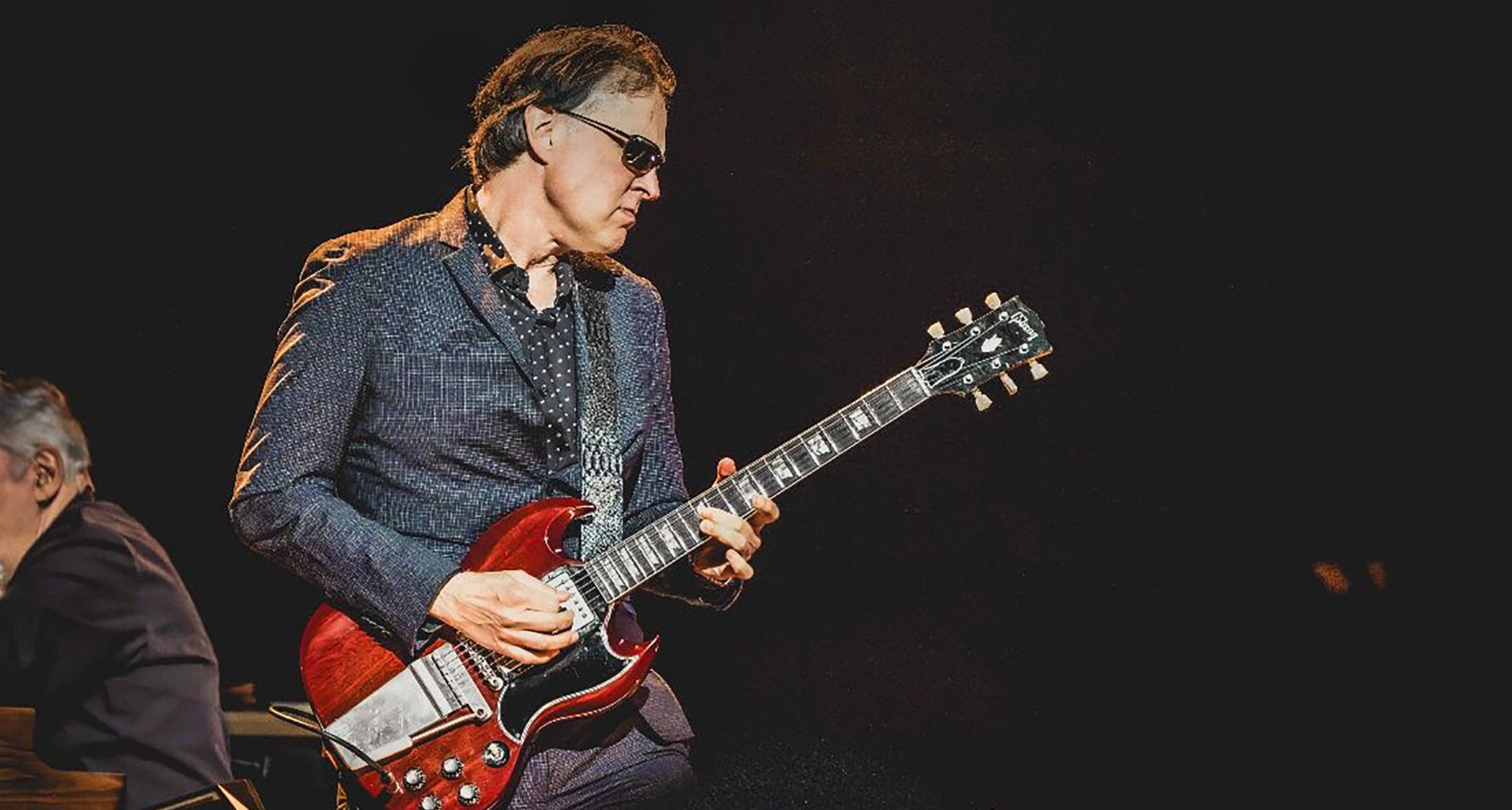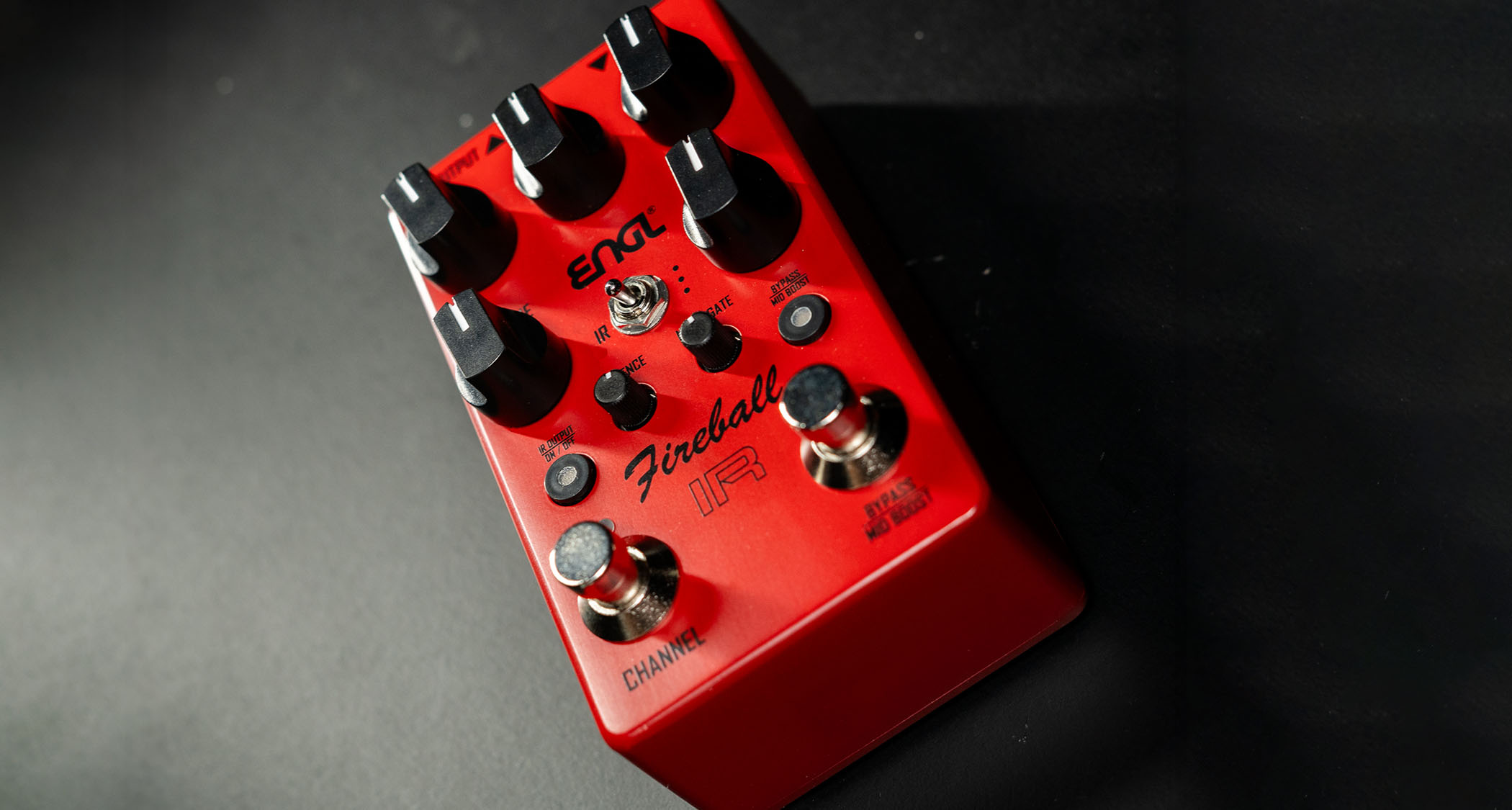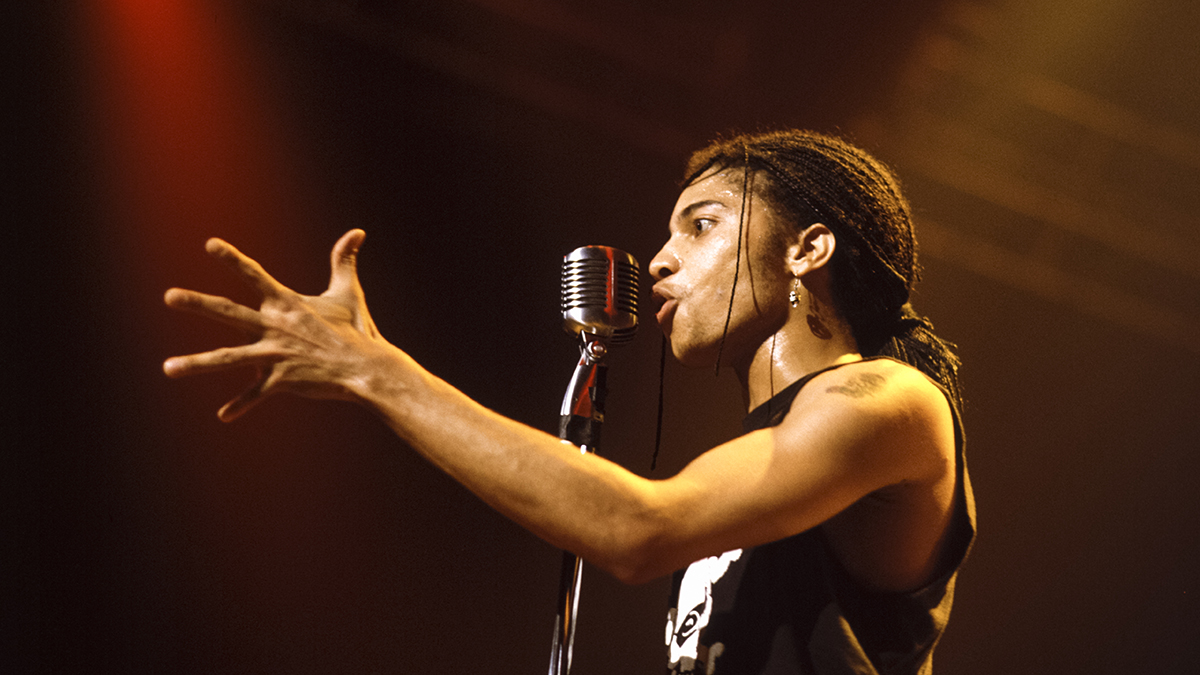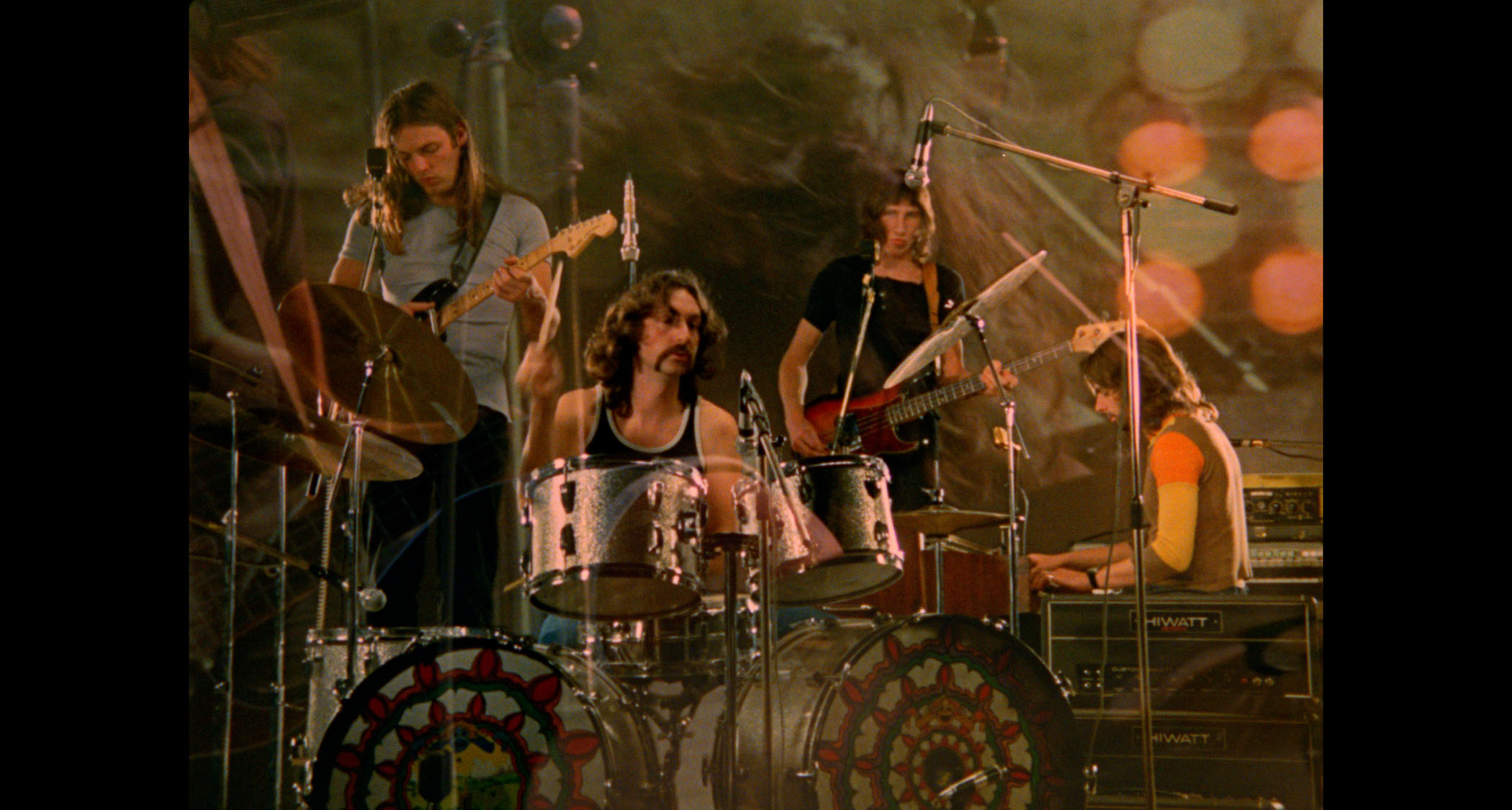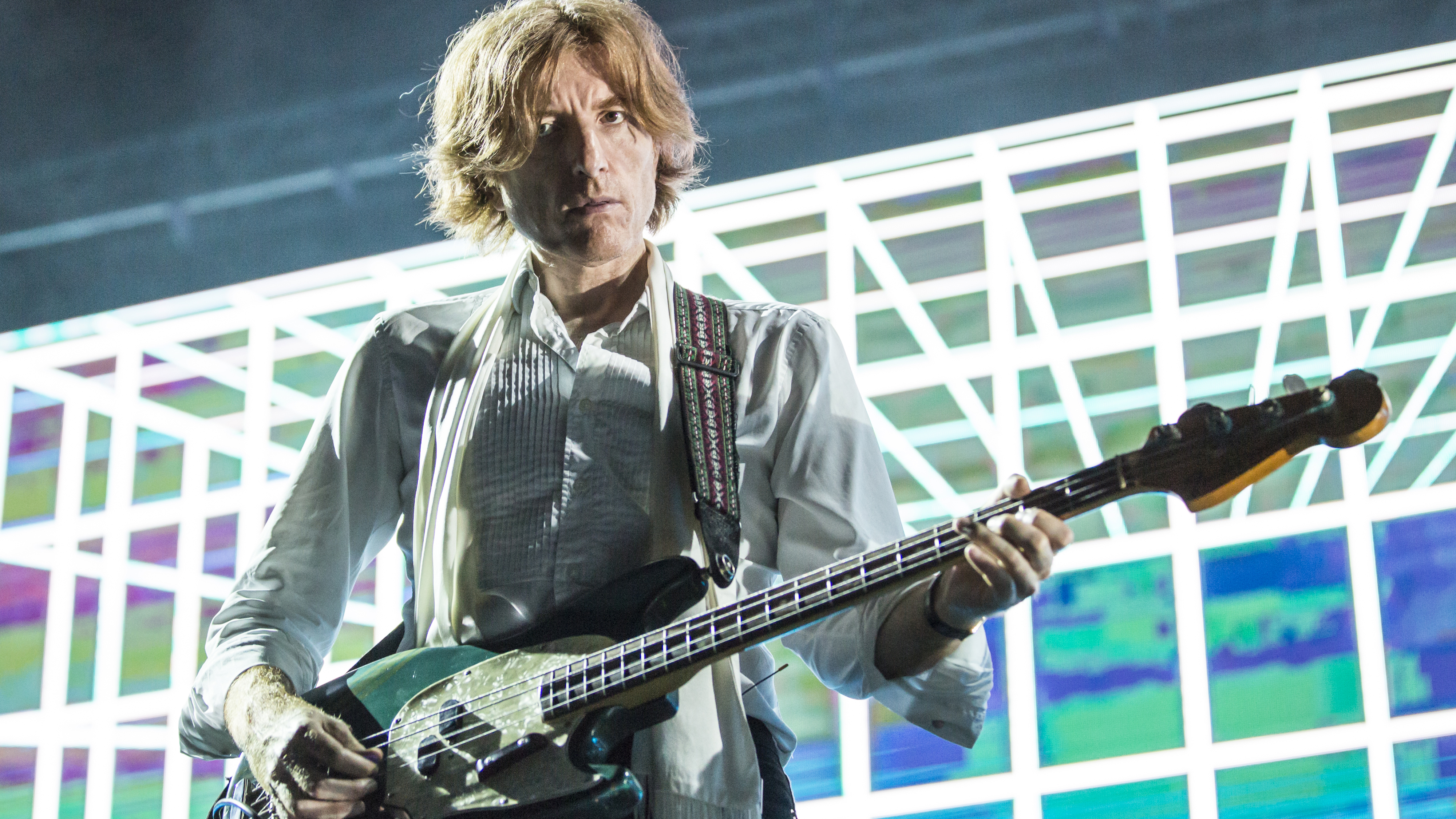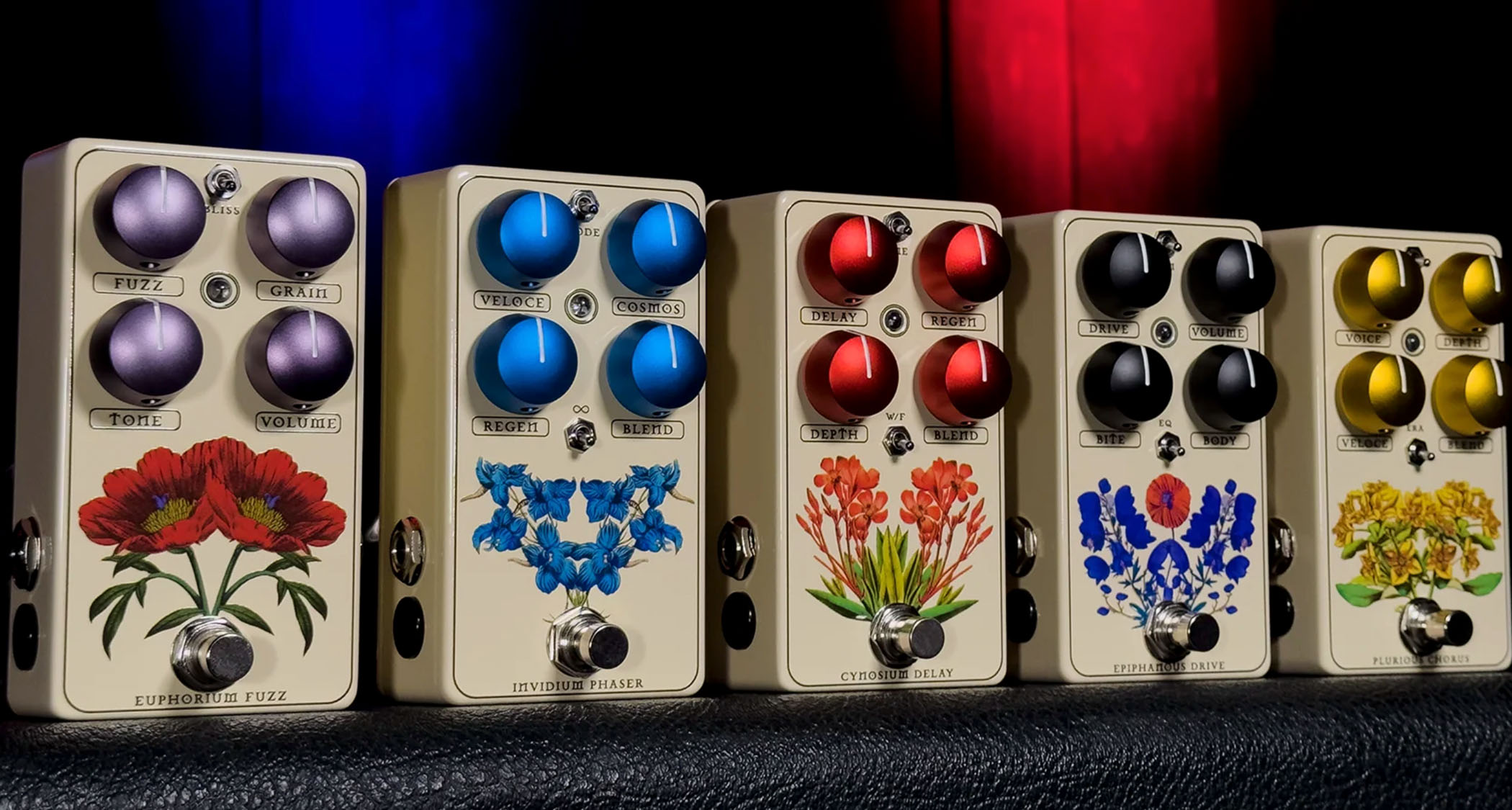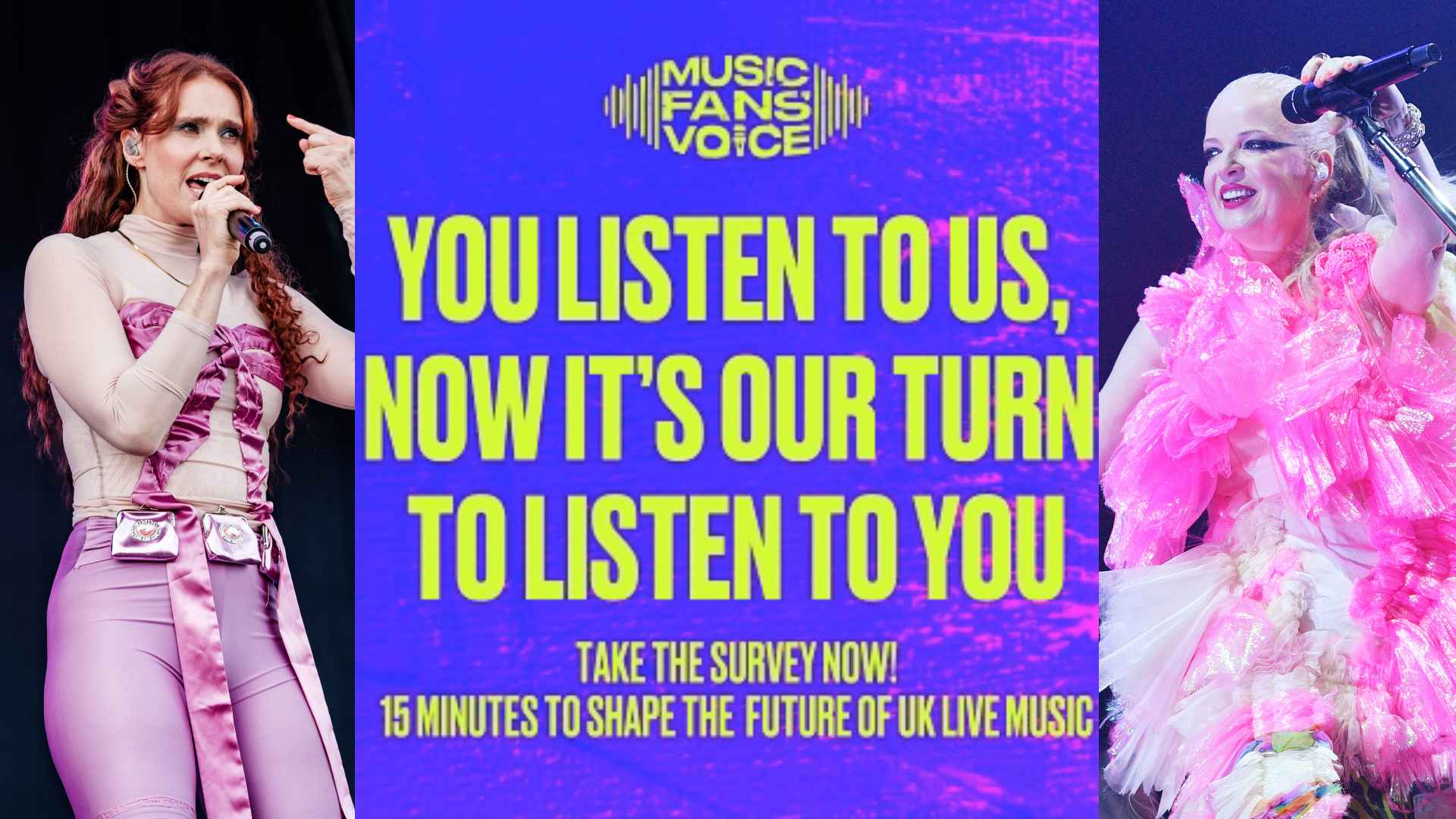Forest Swords on his in-the-box approach to organic electronica, and why there's more to life than music
Wirral-based producer Matthew Barnes on his naturalistic soundscapes and otherworldly textures.
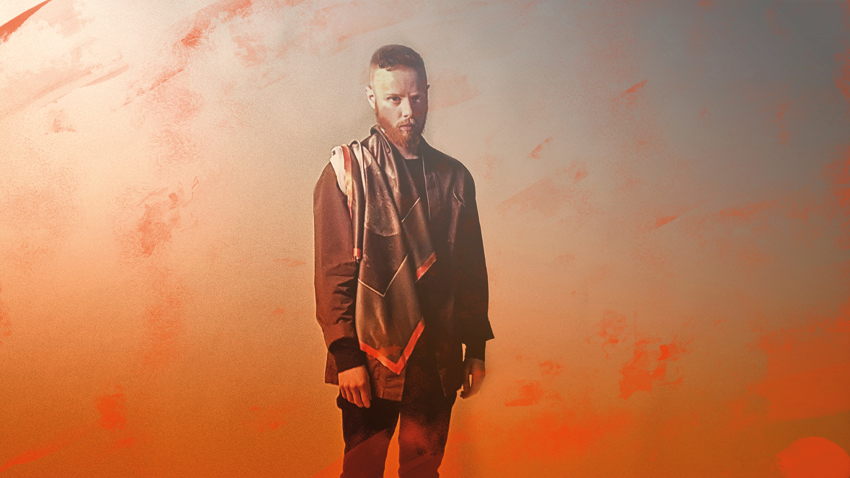
Matthew Barnes’ debut release as Forest Swords, 2010’s Dagger Paths EP, became an instant underground favourite, thanks to its genuinely unique blend of dub-like electronics, naturalistic textures and otherworldly snatches of unintelligible vocal textures. In the two albums that have followed - 2013’s Engravings and new LP Compassion - Barnes has continued to mine those same seams, creating music out of recontextualised samples and found recordings captured both on his travels and amongst the nature-rich surroundings of his home turf on the Wirral peninsula.
Barnes’ introduction to music came from playing guitar in bands throughout his teens, before being introduced to a melting pot of techno, grime, jazz and hip-hop in college, all of which dovetailed into a natural curiosity for music production. This conflation of influences still remains in his music, however, which has apparent scant regard for genre rules and boundaries.
With Compassion already picking up yet more critical praise, we caught up with Barnes to talk about the album’s creation and find out how scoring film and stage is helping him further broaden his sonic horizons.
It sounds like there are lots of chopped-up instruments in your tracks… Is that how they tend to start out, with you playing and recording?
“It’s a real mixture. I think the problem I did have with purely electronic music, coming from a background of guitar music, is it doesn’t always connect with me on an emotional level. That’s why I naturally started to put more live instruments into my tracks. What I could play was guitar, even if it’s very rudimentary, so that’s how I ended up putting in all these little guitar lines in there. I like live bass too - I was listening to a lot of dub music when I first started, and the bass on that is really nice and rounded and full. I couldn’t really mimic that with electronics, so out of necessity I ended up turning to live instruments.
“The more I did it, the more I started enjoying playing with the ambiguity between what’s live and what isn’t. That’s especially true on this record. There are so many amazing plugins now that can mimic real instruments, so not letting listeners in on what’s live and what’s computer generated is quite fun to me. There are still bits of live instrumentation in there but not a great deal, and the stuff that I do put in is very heavily processed. Recordings very rarely make it onto the record without heavy editing, processing and sequencing.
“There’s a lot of samples on this record, too, but again, they’re quite heavily processed, or they’ve been played around with for a long time before I end up putting them in the full track. I’ve always felt taking full samples without recontextualising them or editing them in some way leaves you without a feeling of ownership over them.”
Get the MusicRadar Newsletter
Want all the hottest music and gear news, reviews, deals, features and more, direct to your inbox? Sign up here.
Is that the case with your percussion sounds? Are you recording those yourself or manipulating samples?
“I’ve never put any live drums in my tracks. It’s all either found sounds that I’ve chopped up, or single hits I’ve pulled from old records or sample packs. But in every case, I’ve heavily processed and resequenced things. I’ve never just lifted a drum loop out of an old track – I just wouldn’t feel comfortable doing that. I know a lot of artists do – and that’s totally cool, there’s a whole culture around sampling in that way – but that’s just not possible for the kinds of sounds I want to use.”
It’s a bit of a vague term but there’s something very ‘natural’ sounding about the textures in your tracks. Are you using field recordings to achieve that?
“Yeah, there are quite a lot of field recordings on the album. I have such a rudimentary way of going about that, though. A lot of the field recordings are just taken off of my phone. When I’m out, if I hear something, I’ll just use the voice notes recorder on my phone to capture it and then bring it back to use on my laptop. I really enjoy taking shitty audio recordings and making them sound interesting by playing around with effects. I’m not too precious about sound quality. I’ll record sounds from anywhere; on this album there’s recordings of old air conditioners, natural environmental sounds, lots of things like that. There’s a recording of boats moored in Liverpool docks clanking against the wall – I managed to get a really nice recording of that which ended up making part of a beat. I like making snares that way – if you pitch anything down you can always make it sound like a snare drum.
“I’ll often use field recordings as just a bed or a texture. When you use sounds like that, they become their own thing and you don’t really need to worry about cleaning them up too much. I kind of like that grittiness sometimes; it adds a nice textural element. Similarly, quite a lot of the time I’ll make something on my laptop, like a synth line or something, and I’ll then put it through my old four-track and back into the laptop, just to add some extra warmth and texture. Maybe people don’t even notice it but it makes a difference for me.”
“I’ll often use field recordings as just a bed or a texture. When you use sounds like that, they become their own thing and you don’t really need to worry about cleaning them up too much.”
Do you go to specific places to capture their ambience, or do you just see what jumps out at you when you’re walking around?
“All the times I’ve been out purposely trying to record stuff, I’ve never really found anything. It’s the times when I’m just out and about on errands, or just living my normal life, then I’ll hear something and be like, ‘I have to get that sound’. I was in an airport last week and I nearly missed my flight because I was trying to record a kid banging a shoe on a table. Your ear just tunes into stuff sometimes and it jumps out at you.”
Do you use those recordings as the foundation for building beats?
“Quite often I start with them there just as a bed. Half the time they’re so low in the final mix that people don’t realise that they’re there, but for me they provide a nice starting point. There might be a certain tone or a specific frequency to the sound that inspires a melody or beat, and I can work that out on top. It’s very rare that I’ll put it high in the final mix, but those recordings are always there on some level.”
Tell us about the heavily processed vocal sounds you use a lot in your tracks?
“It’s almost like I’m using the voice as a texture more than anything else. There are very few tracks that I’ve made that have an intelligible lyric to them - there’s one on the latest record, and that’s the first time I’ve ever done that.
“Quite a lot of the time, I’ll just pick and choose bits of vocal sounds that, when you put them together, give you some kind of feeling, but more from emotional resonance than actually trying to make sense. Generally, I’ll take a bunch of vocals from different places and try and make it feel like those composite pieces already existed as a complete vocal.”
Are you mostly sampling those from records?
“It’s a mixture. Sometimes I’ll find a loop or vocal hit from a track, which might only be about half a second long, and I’ll try and extrapolate that into a melody or layer it without other snippets like that. Quite often, I’ve recorded my own voice too, and pitch it to fit with the sample. That way you end up with this mixture of samples and real vocals and you don’t really know what’s what.
“That’s quite a fun thing to do, but the whole process can be pretty tiring. I find when working with vocals it can take a lot longer to get something satisfactory, compared to just making a melody. It’s a lot more challenging to find vocal phrases that you can mash up and make something new from. It generally takes a lot of work to get the vocals to the point they’re in on the final mix, but it’s a really good challenge.
“Sources can be anything from YouTube videos to bits I’ve grabbed off the TV. There’s stuff from old records in there, too, and again, quite a few are from field recordings. In the past, I’ve recorded things like people singing on the street, a choir and a choral recital, then I’ve taken those back to my laptop and chopped them up to create new vocal phrases. I find that really fun.”
Other than bouncing things to the four-track, would you say you're mostly using software to process sounds?
“This is the thing… I have such a tiny setup. I feel almost embarrassed talking to you because it’s nothing compared to the artists [MusicRadar] usually talk to. Generally I just use Logic and that’s kind of it. I’ve got a few effects pedals, too, and I’ve got that four-track and a few MIDI keyboards, but the bulk of everything is done in Logic. Quite often I’ll pull a vocal sample into Audacity if I need to do something specific with it or clean it up, as Logic isn’t always the best for working with audio files directly. But on the whole, my production work is done in Logic, and when I play live, I use Ableton.
“What I guess you’d call my ‘studio setup’ is all in the box. I don’t think there’s any shame in that, really. I’ve been moving about a lot over these past 18 months and it’s taught me that actually you don’t need a lot of stuff to make tunes. You don’t need to surround yourself with bits and pieces. I think you can be convinced you need racks of synths and outboard stuff, but it’s really taught me that - excuse the cliché - it’s not the tools you have but how you use them.
“I’ve been living in small spaces and travelling around. Quite a lot of this latest record was made in Airbnbs that I’d rented in various places. Just being able to sit down with a laptop and know I’m not missing a certain synth or compressor is really valuable. That’s why I’d always say just have a go in Logic and see if you can get the sound you want there.”
So would you say the immediacy of being able to work wherever you happen to be is more important to you than having loads of tools at your disposal?
“Totally. I’ve learnt that, if I have a particular sound in mind for a track, I can generally conjure it up by taking a different sound source and reworking it. For example, there was a specific synth sound I wanted on this latest record and I couldn’t quite get the sound in my head using the plugins I had. Rather than go out and try synths or pick one up from eBay, I took a very basic synth sound from another track, ‘weirded it up’ with effects and put it into a new instrument across a MIDI keyboard. That ended up giving me the exact sound I had in my mind. It felt like quite a punk way to approach it, which I liked.
“Being able to work in the box wherever I am is really handy. I tend not to write on the road when I’m on tour, but having the ability to not be locked down to a studio space is super handy. What I have been doing, and what I’d probably do in the future as well, is do stuff in the box on my laptop and then, once every few weeks or so, hire a studio for the day, or at least some space with decent monitors and a nice setup, just to see how things sound in a different space. Taking things out of that ‘in the box’ context does make all the difference sometimes.”
Are we right in thinking you mixed your last album, Engravings, outdoors?
“Yes. I live on the Wirral just outside Liverpool. There’s a beautiful hill there that overlooks the River Dee. I’d spent so long indoors making the record that I had cabin fever and had to get out. I couldn’t really afford to get a studio to mix it in as I was working on quite a low budget, so I just thought I’d take my laptop outdoors and see what happened.
“I charged my laptop up, took my headphones out and a basically mixed it outdoors sat on a bench. I was basically doing one track a day, just relying on the charge in my laptop - as soon as the battery died I’d just give up and go home. It was mixed pretty quickly, over the course of about a week. It was really interesting taking it into a different space like that. You really approach music differently listening to it outdoors, compared to hearing it shut away in a dark space; it completely changes your perception of how sounds sit together and how things reconcile with each other texturally. It really helped me out actually; it gave that record a different life.”
Did you do the same thing with Compassion?
“No, I didn’t really feel I needed to do that, because I was changing the space I was recording in so much that it automatically added a bit of freshness to it. Rather than being in one space, as with Engravings, where I was basically indoors going mad, with this record I took myself to different places and tried to breathe new life into it by changing environments.
“I would definitely [mix outside] again - it was an interesting experience - but the main thing I’ve learnt is that changing up your environment every now and then really helps the creative process. It completely changes the way you listen.”
Aside from changing locations, have there been any other big differences in the creative process between Engravings and Compassion?
“I’ve done a bit of collaborative and scoring work over the past two years, which definitely influenced me. I scored a contemporary dance piece in Liverpool and I also worked with a film maker called Liam Young, who was working on the first film ever to be made with drones, which I scored. I worked with Massive Attack for a bit, too.
“All of those things, over the course of 18 months to two years, really loosened me up. It taught me a lot of stuff. For example, scoring a film or dance piece teaches you a lot about breathing room and space, and how important negative space is. That really fed into the way I approached this latest record; how I was looking at layers and space when approaching making the tunes. There’s a lot more space on this record because of that. I don’t think I’d have been brave enough to do that were it not for having the experience of working with film. There are moments on the record where there’s really not a lot going on, and I don’t think I’d have had the balls to do that otherwise.”
Going in a bit deeper on the dance piece you worked on, Shrine: what was the process of creating that like? How closely did you work with the choreographers?
“I came up with some of the score before the dancers got involved, actually. I came up with this concept around the body; it was going to be a full record at one point. All the sounds on the record would have been sounds of the human body. I came across this idea around using breath samples and recordings of breathing.
“I tried playing those samples on a big sound system, and without fail people were disgusted by it. As humans we don’t really enjoy hearing other people breathe; it feels really uncomfortable. There was something really perverse about making tunes out of that. I started processing those breath samples into rhythms, beats and melodies. Again, that was actually a really good learning experience in terms of how to work with software. You can make any sound into melody; it was really eye-opening to me.
“I’d been talking to this arts organisation, Metal, about doing some kind of commission or installation. I told them about this breathing idea and played them a few tracks, and they came up with the idea of getting a choreographer to respond to those sounds. We got a choreographer and a dancer onboard and worked together to develop the idea. It felt like quite a mutual process; I’d had a few existing tracks and then they took those away and made something from them; then I made a couple more based around their input. Then we put the whole thing together into a live show. I was really pleased with how it turned out. As a body of work, I think it’s fairly out there, compared to Engravings, but it was a great learning experience and it’s definitely something I never would have done before.”
“As a body of work, I think it’s fairly out there, compared to Engravings, but it was a great learning experience and it’s definitely something I never would have done before.”
You’ve spoken in the past about suffering from tinnitus and hearing problems. How does that impact you as a producer?
“A lot of it is in ways that I’m not entirely conscious of, because I’ve not really known anything else. The tinnitus aspect certainly makes me lose certain frequencies in my hearing. For example, a bunch of stuff on this record I played to a few other people early on and there were certain bits that they’d say sounded too shrill or too bass heavy. I couldn’t really hear that myself because I’d lost the ability to recognise those frequencies. So it does mean that sometimes I need a second opinion on stuff.
“Also, I’m a lot more conscious of ear wear and tear. If I’m playing a festival and out watching other acts then I always make sure I’m wearing ear plugs. When I’m making my own tunes I’m always wary of not doing it for a long period of time - generally, three or four hours is my maximum. In some ways, that’s probably helpful, as I’m not sitting for 12 hours a day making music.”
Do you generally prefer to work on tracks in short bursts then?
“Yeah, I’ll work on something for a couple of hours and then come back to it another day. Doing that can be quite helpful; there’ll be things that I’ve done one day that don’t sound particularly good the next. I’m sure a lot of producers find that… when you work on something for a long time and then the next time you listen to it you’ll be like, ‘This is shit’.
“Sometimes you can go forever working on sounds and just make the wildest, weirdest things you can possibly imagine. Just for your own peace of mind you need to have some sort of internal clock that says stop. For me, that’s my ears.
“It’s funny, though… since I’ve mentioned my hearing in interviews, I’ve had a lot of people contact me about it, or come up to me at shows and say that me talking about it has made them realise they have the same problems. If I can get the word out about it and the importance of protecting your ears, then that’s only a good thing. Particularly for producers who sit in front of monitors for long periods and spend a lot of time in clubs and at shows… if you’re not protecting your ears then it can have a long-lasting effect.”
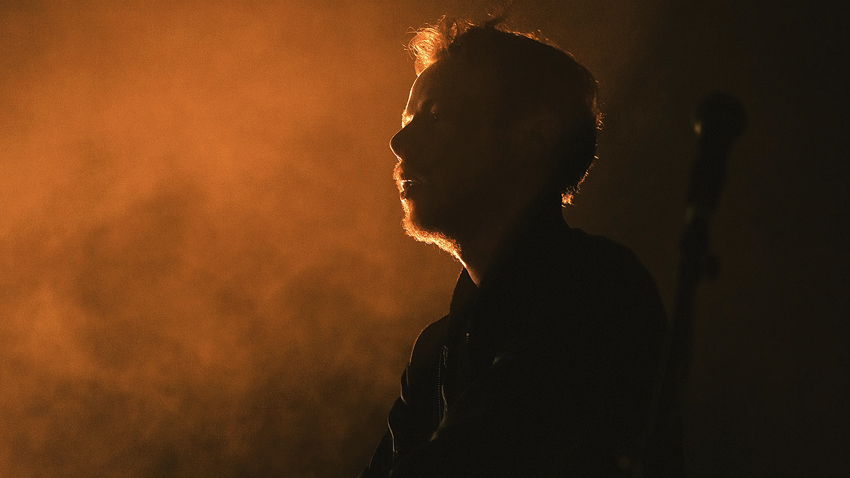
So what’s your plan for playing live around this album?
“I’ve got a bass player that I play live with and I’m looking to potentially expand that at the moment. It all comes down to money, ultimately, and whether I can afford to take somebody else out with me. There’s a bit of saxophone on this record, so I’m looking to maybe take a sax player or a drummer, just to add some different textures here and there. I’m also working on a visual show that will accompany it through projections and things.
“On this album in particular, a lot of the songs break down and fall apart, and I’m really interested in pulling them to pieces live and playing around with that a bit more. Generally, in the past, I’ve been pretty faithful to the recorded versions, because that’s how I enjoy playing them - it feels almost ritualistic on some level. But I’ve been listening to a lot of jazz lately and the idea of pulling songs apart and letting them find their own path feels really exciting to me right now. That’s the joy of software like Ableton, you can really experiment with pulling the threads apart live, as long as you’re working with musicians who understand how to do that.”
Comparatively, you seem to leave quite a bit of time between releases. Is that because you work fairly slowly, or is it a purposeful thing?
“It’s a mixture of various different things. I do take my time making songs, but I’m also aware that I need to have a life outside of music. Aside from doing the music stuff, I’m also a graphic designer, so I’ve been doing design projects alongside the music. I’ve come to realise it’s really healthy to have other things in my life that aren’t music.
“Even though, for people who enjoy my music, it might seem like I’m not doing anything a lot of the time, I’m generally going away and doing other stuff that people might not hear about. I think it’s really good to try and be objective about music, and I certainly try and look at what I do as a project, rather than my entire life. Doing other bits and pieces, whether that’s travelling or doing bits of design work, or whatever, is really important to me. It enables me to develop new ideas that can then filter back into the way I approach music.”
Forest Swords’ Compassion is out now on Ninja Tune. For upcoming live dates head to the official website.


Future Music is the number one magazine for today's producers. Packed with technique and technology we'll help you make great new music. All-access artist interviews, in-depth gear reviews, essential production tutorials and much more. Every marvellous monthly edition features reliable reviews of the latest and greatest hardware and software technology and techniques, unparalleled advice, in-depth interviews, sensational free samples and so much more to improve the experience and outcome of your music-making.
“A fabulous trip through all eight songs by 24 wonderful artists and remixers... way beyond anything I could have hoped for”: Robert Smith announces new Cure remix album
“I have an original 909 – every time I try to use it I feel like I’m ruining it”: House hero Riva Starr on his studio essentials and his love of analogue synths

